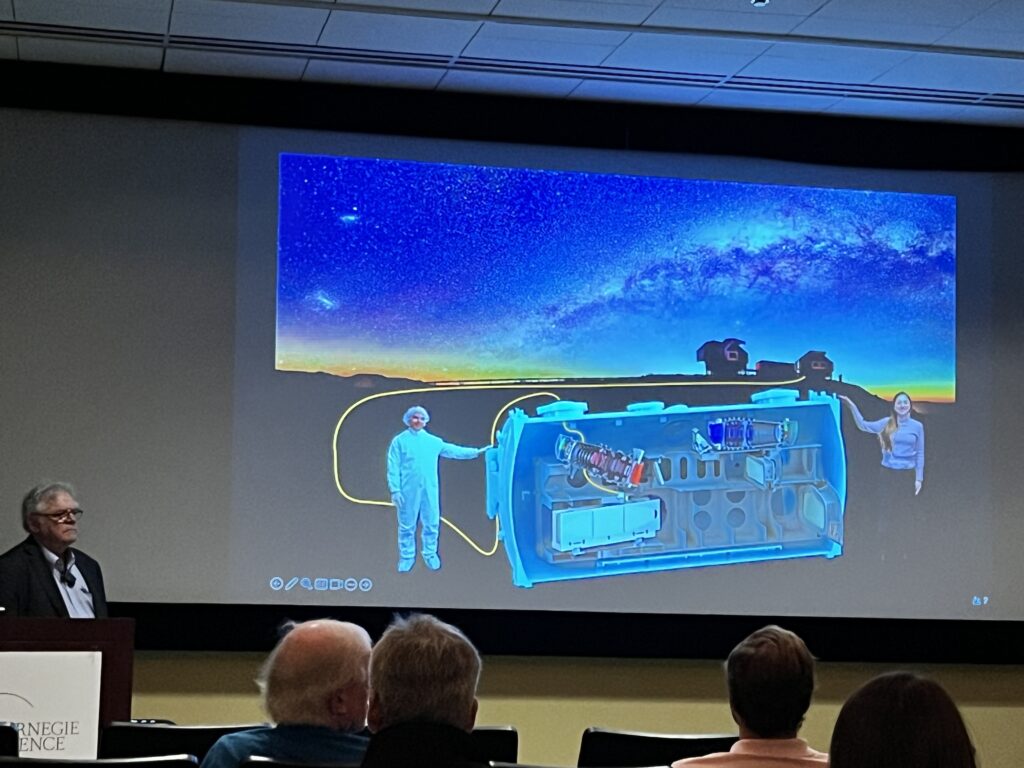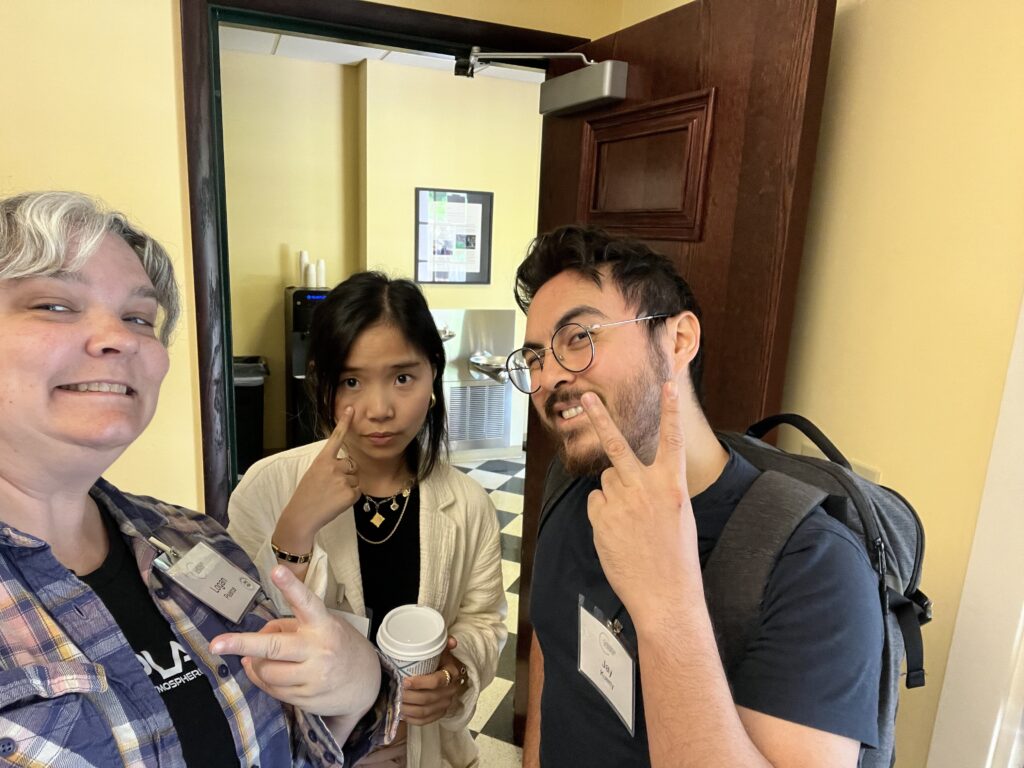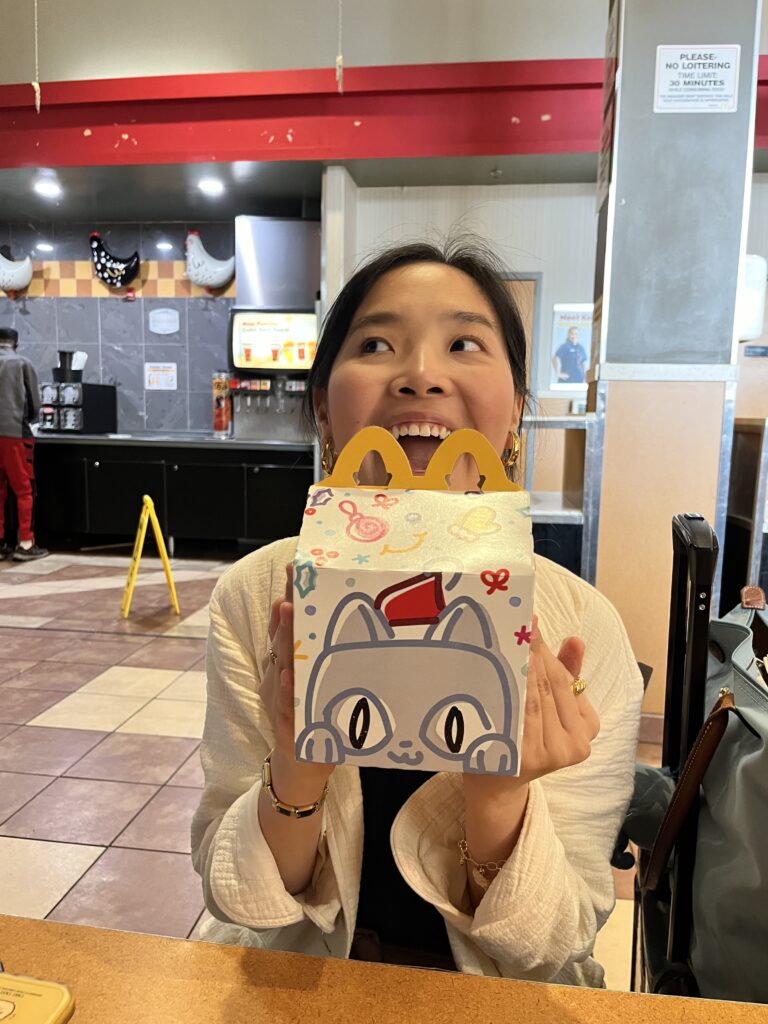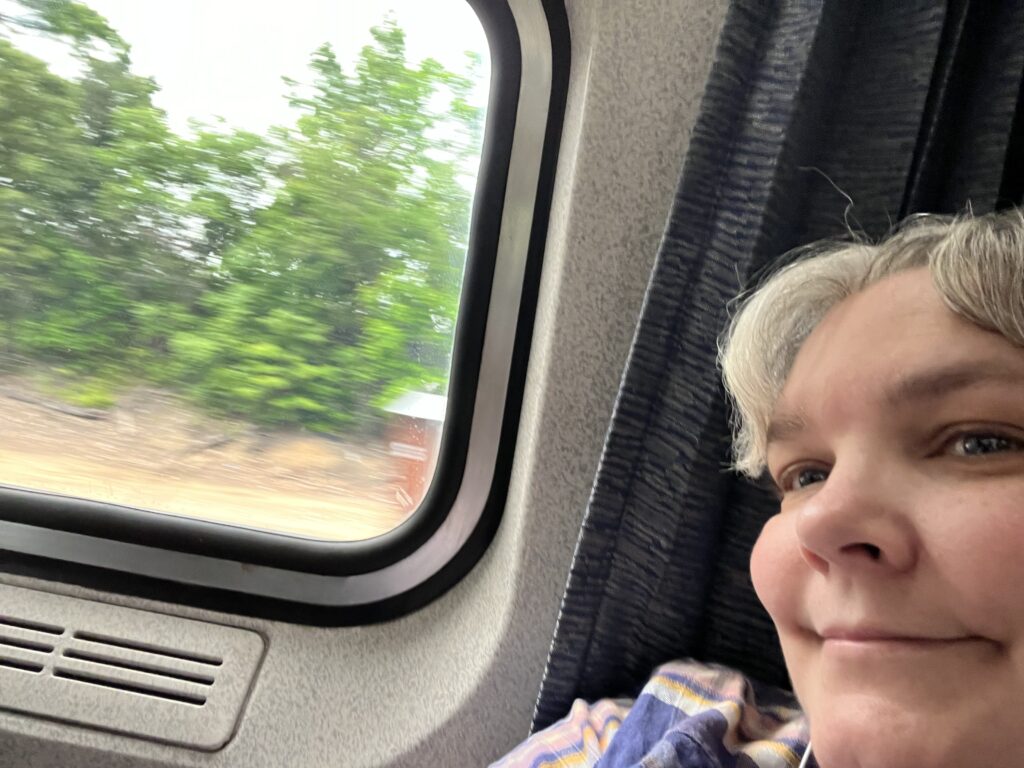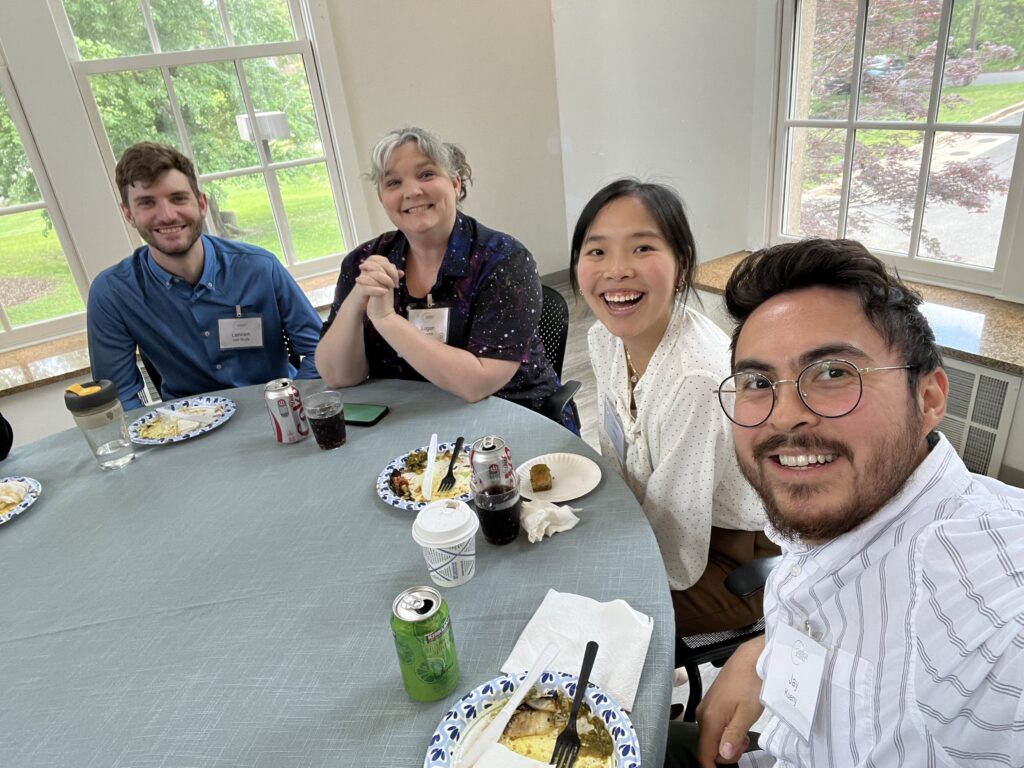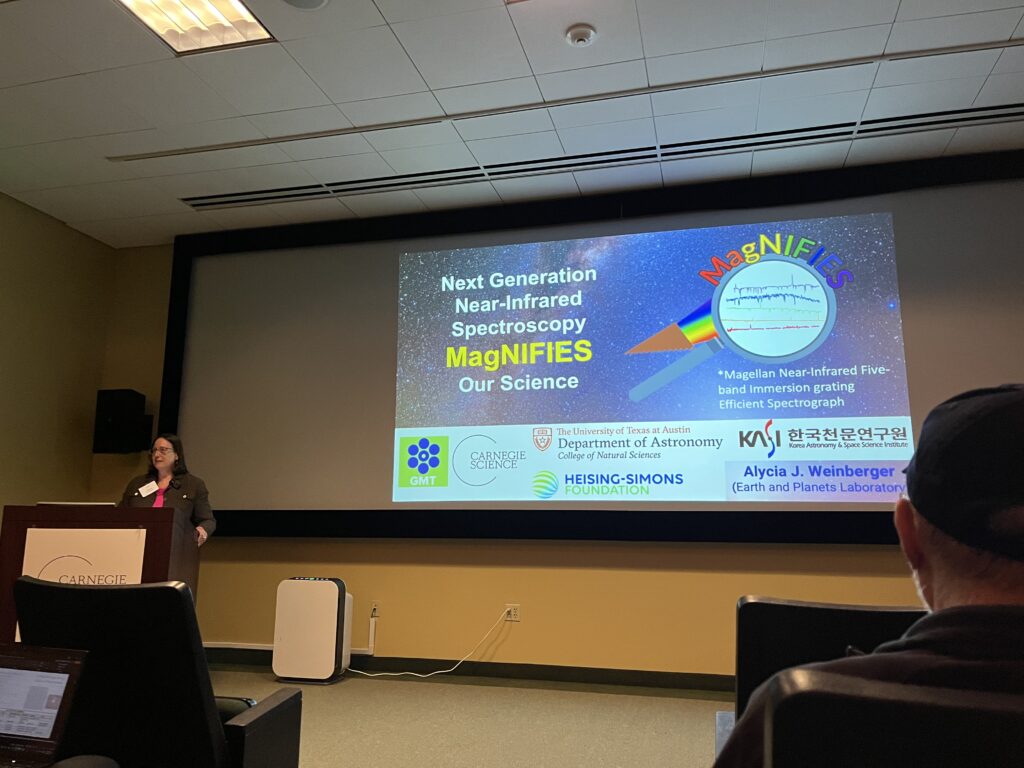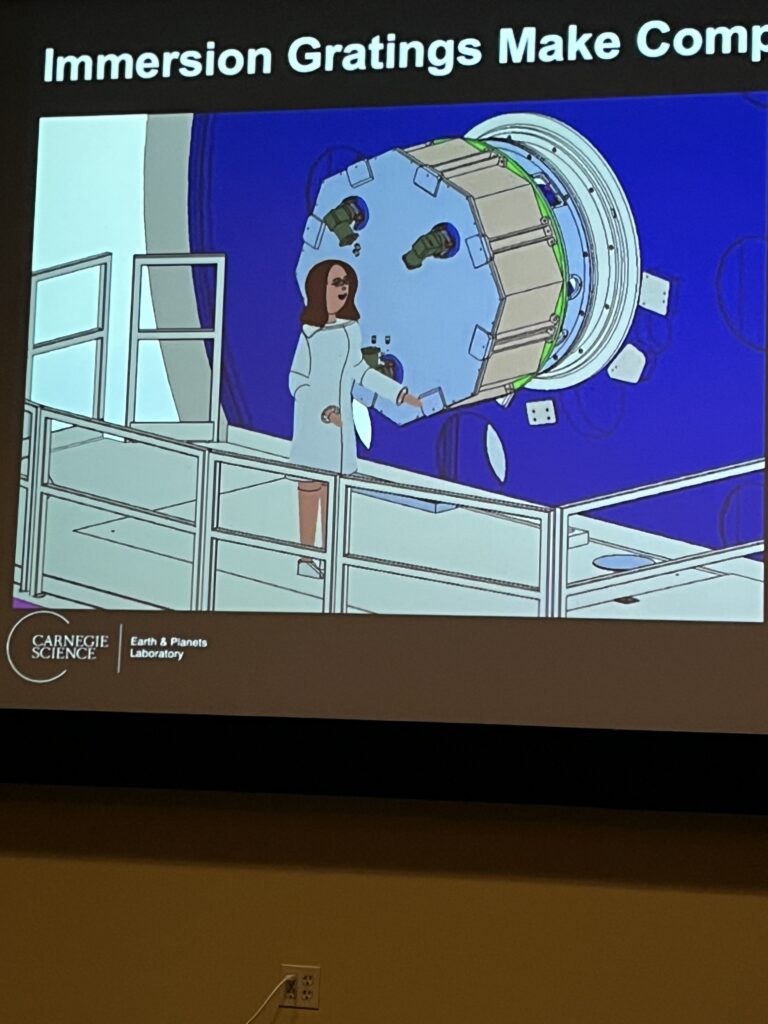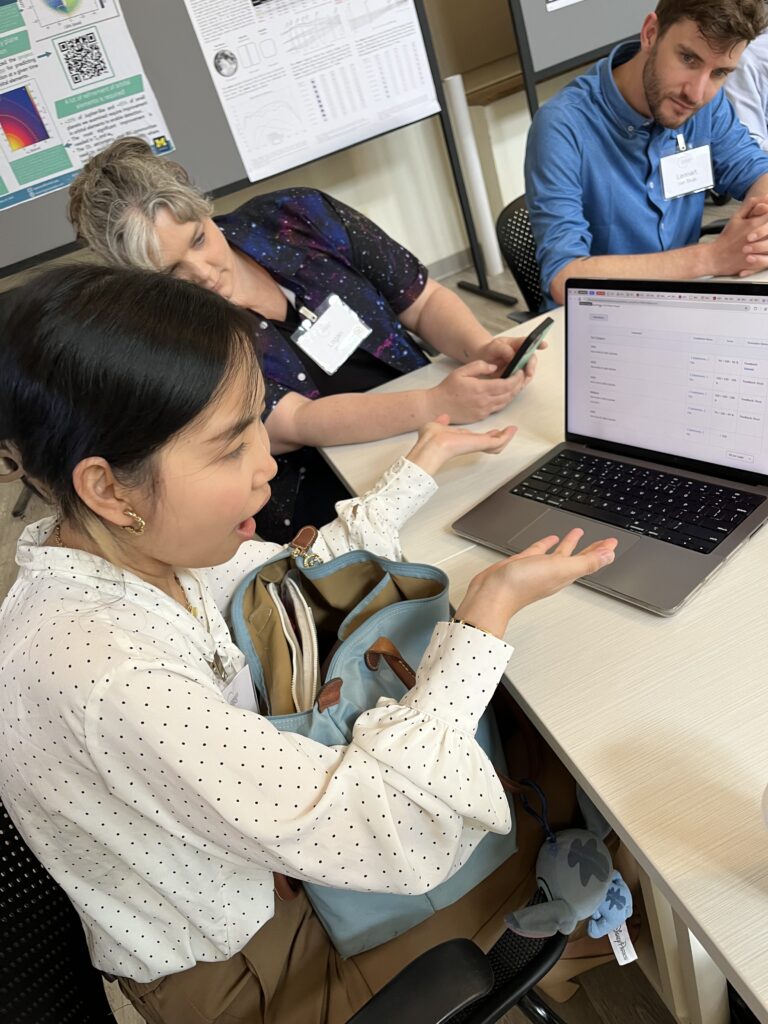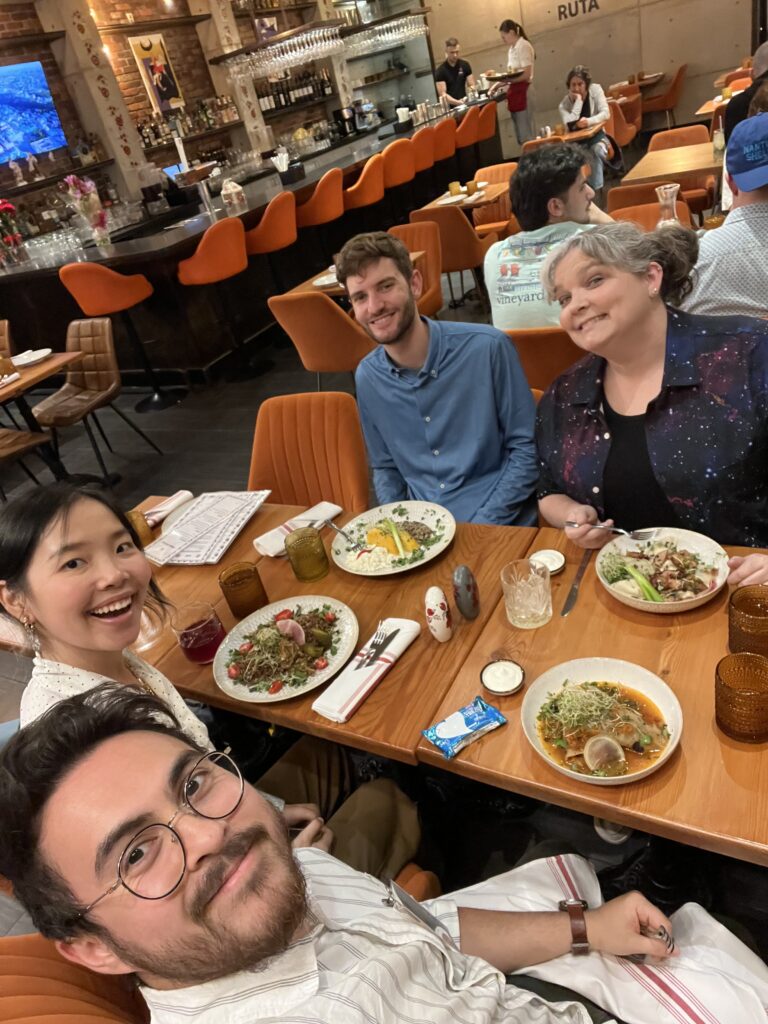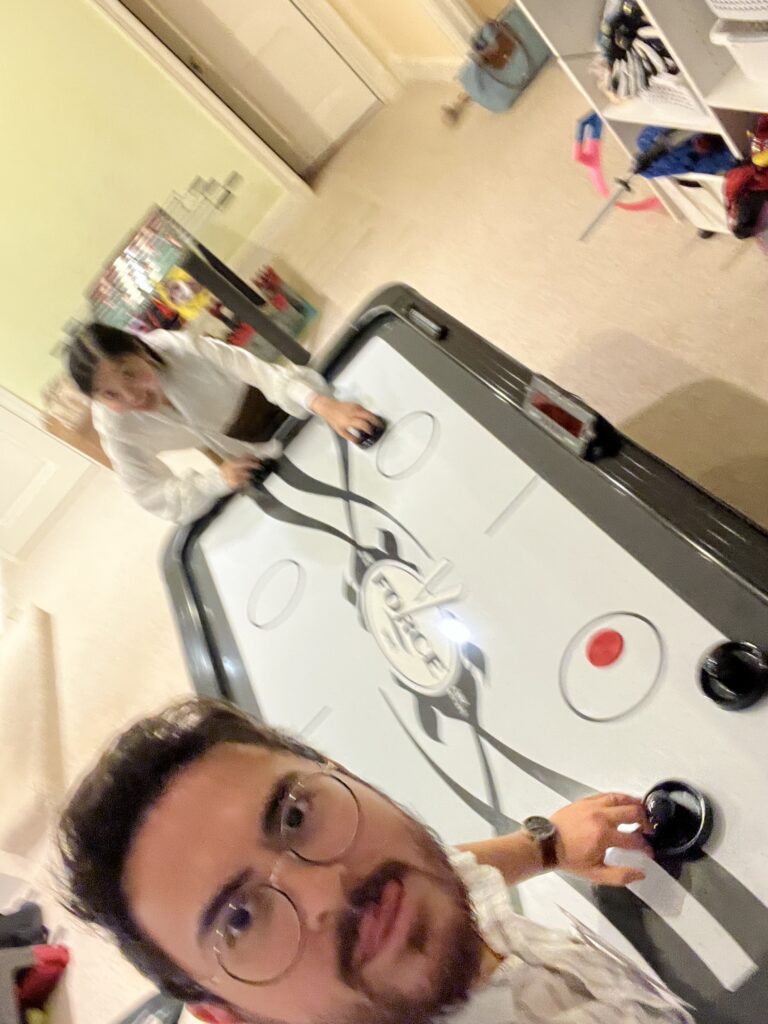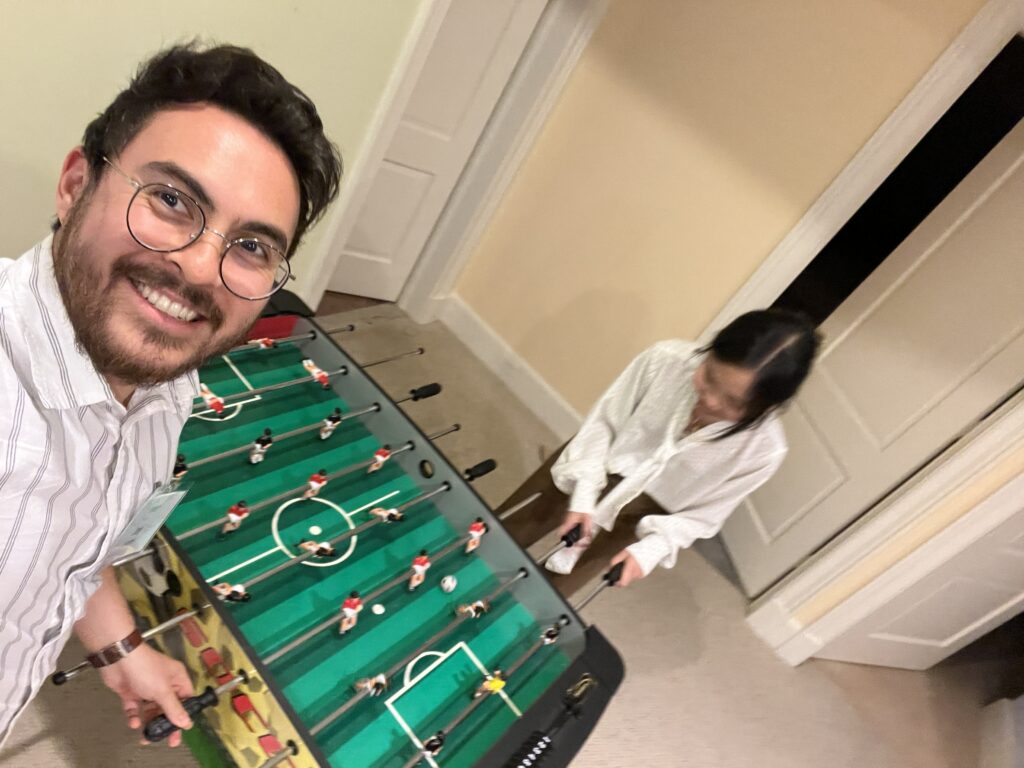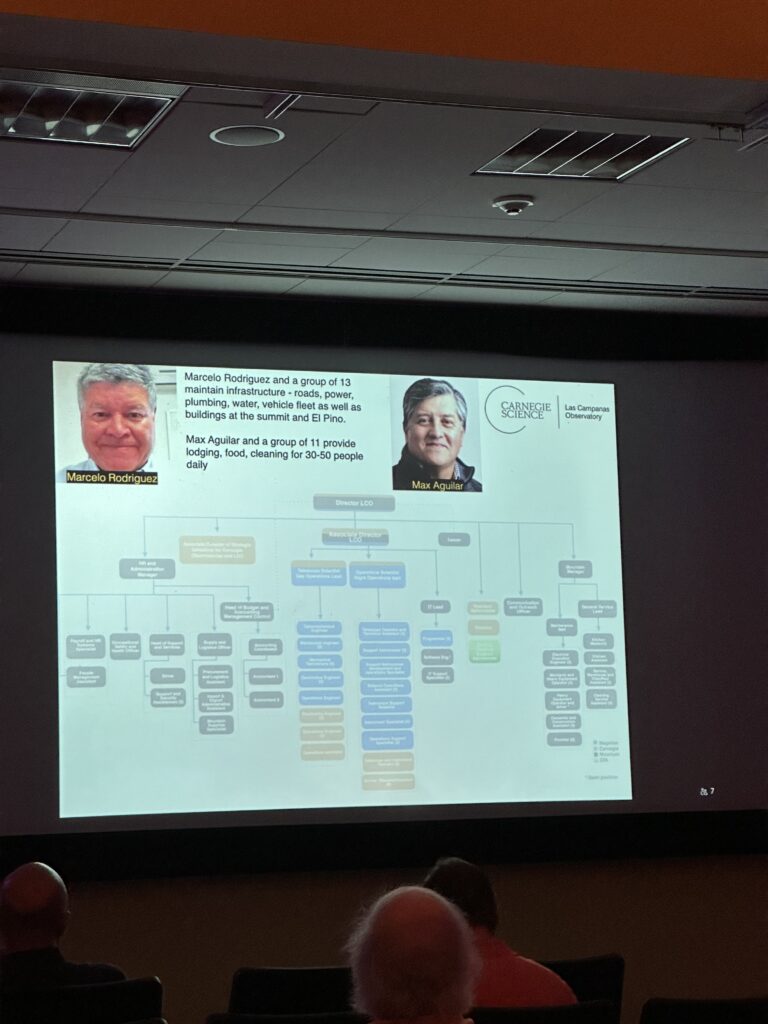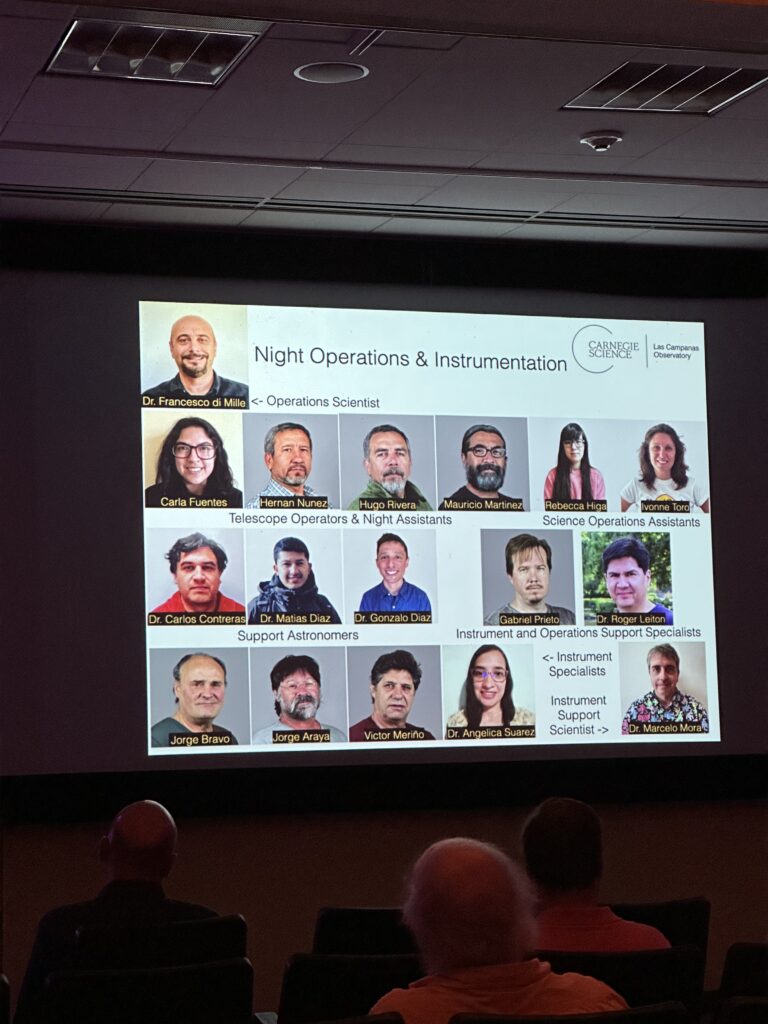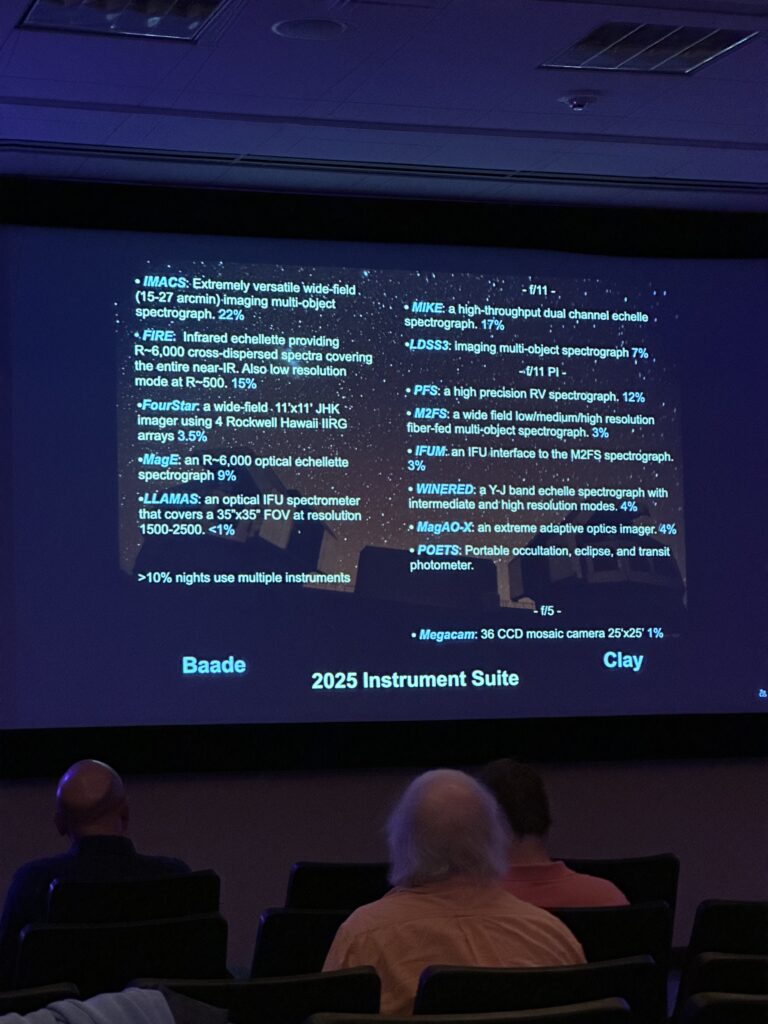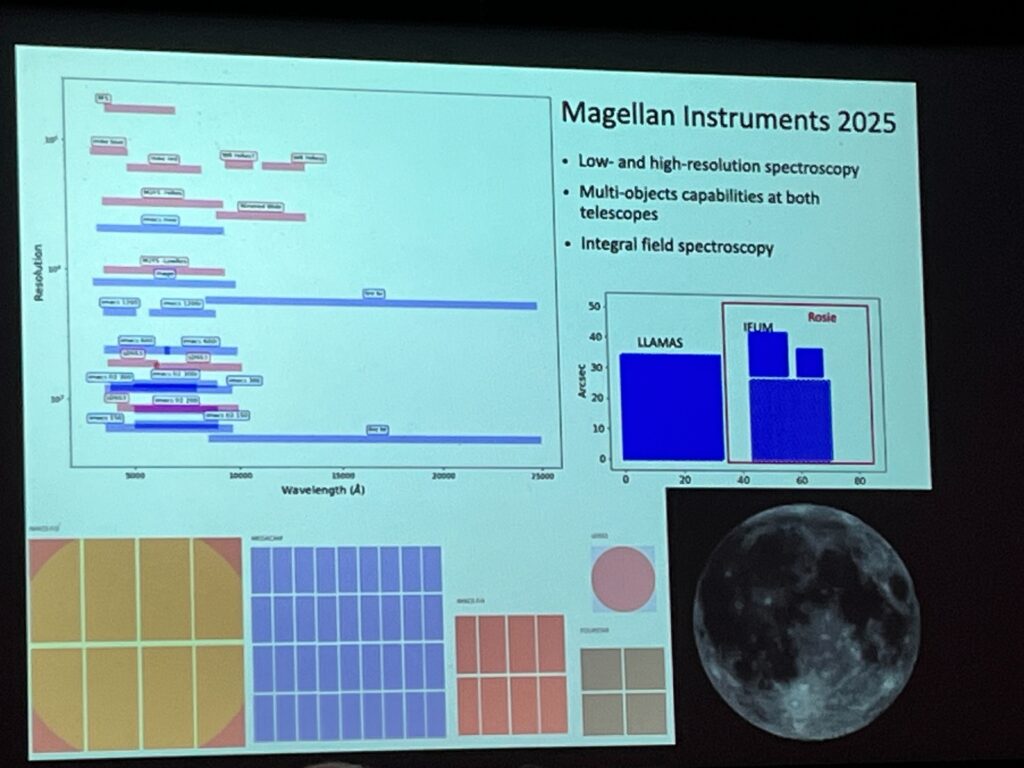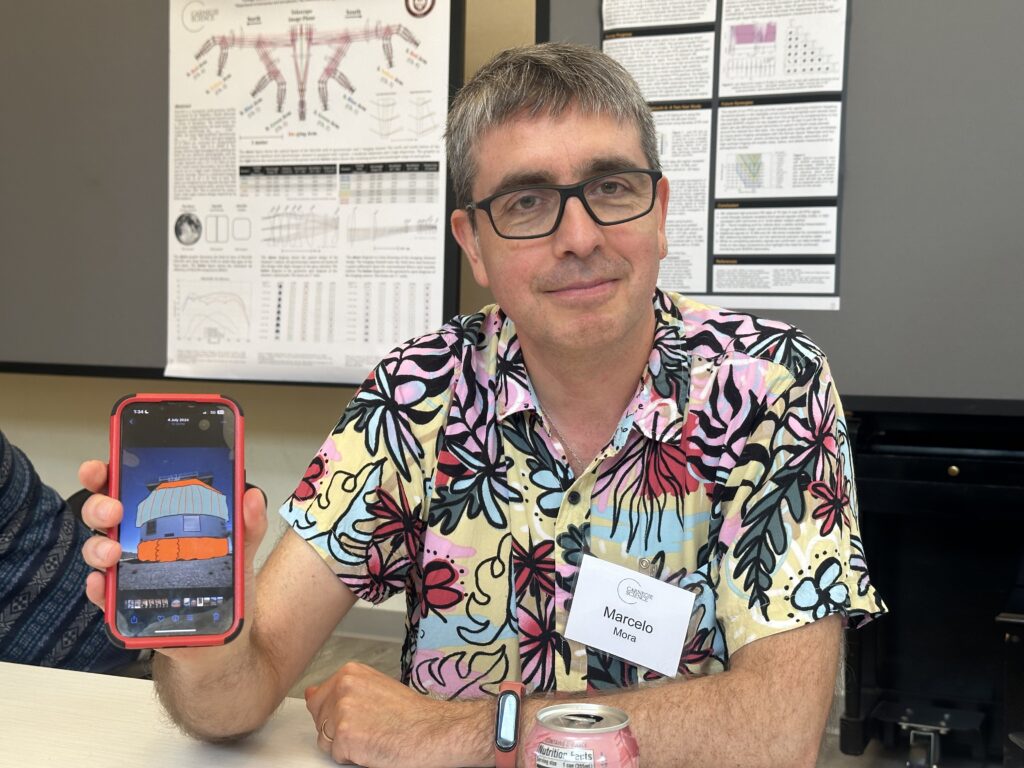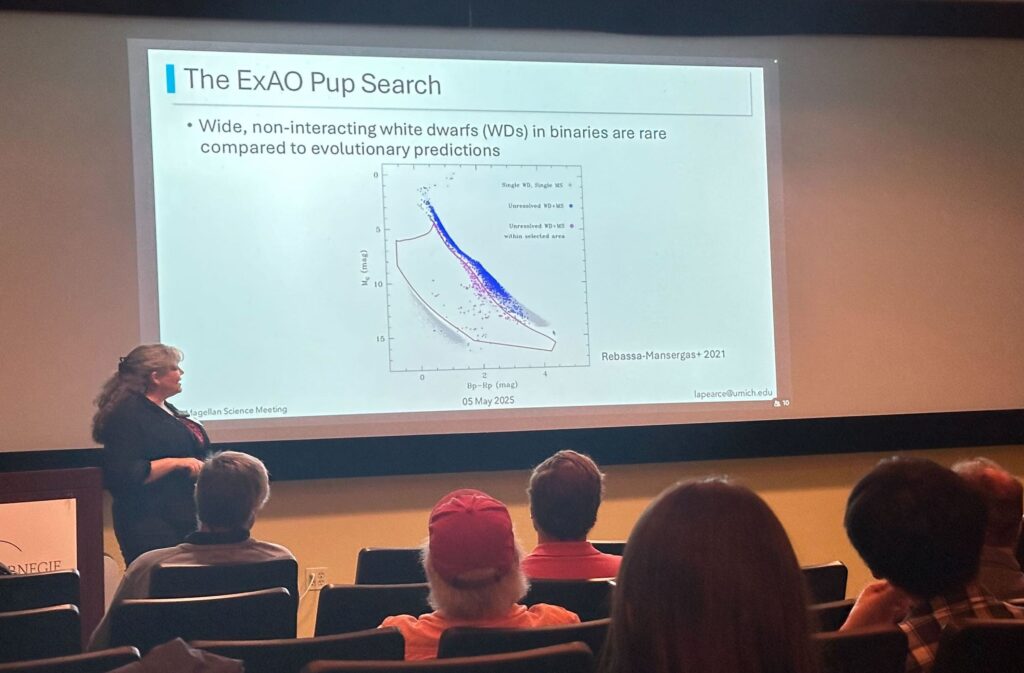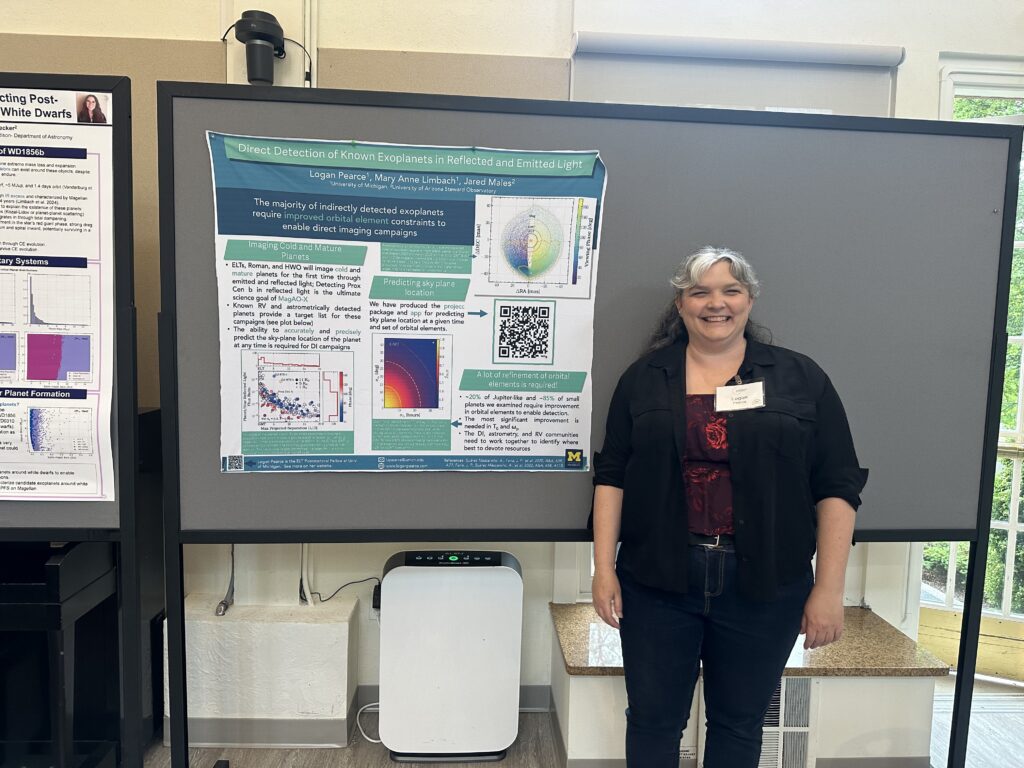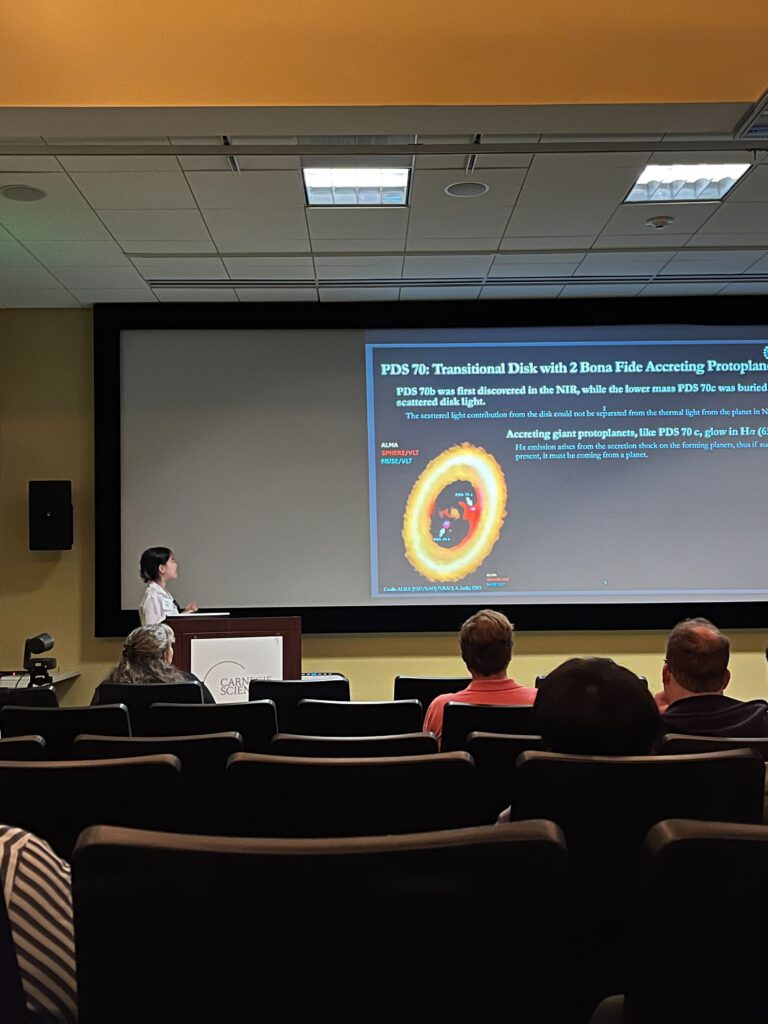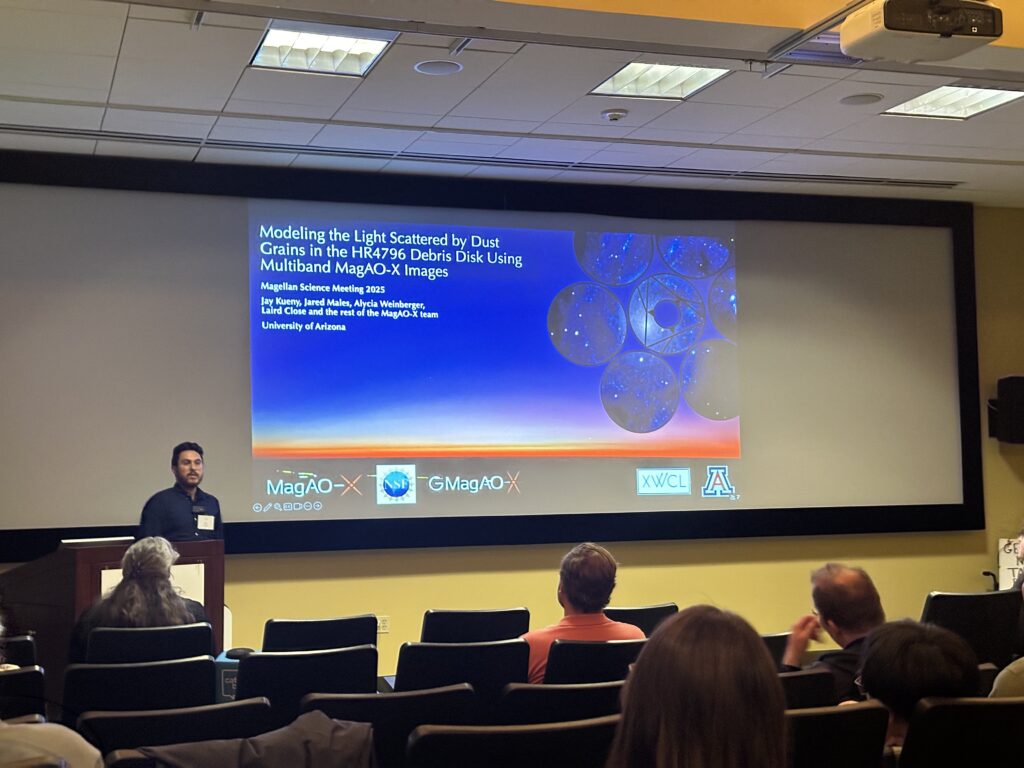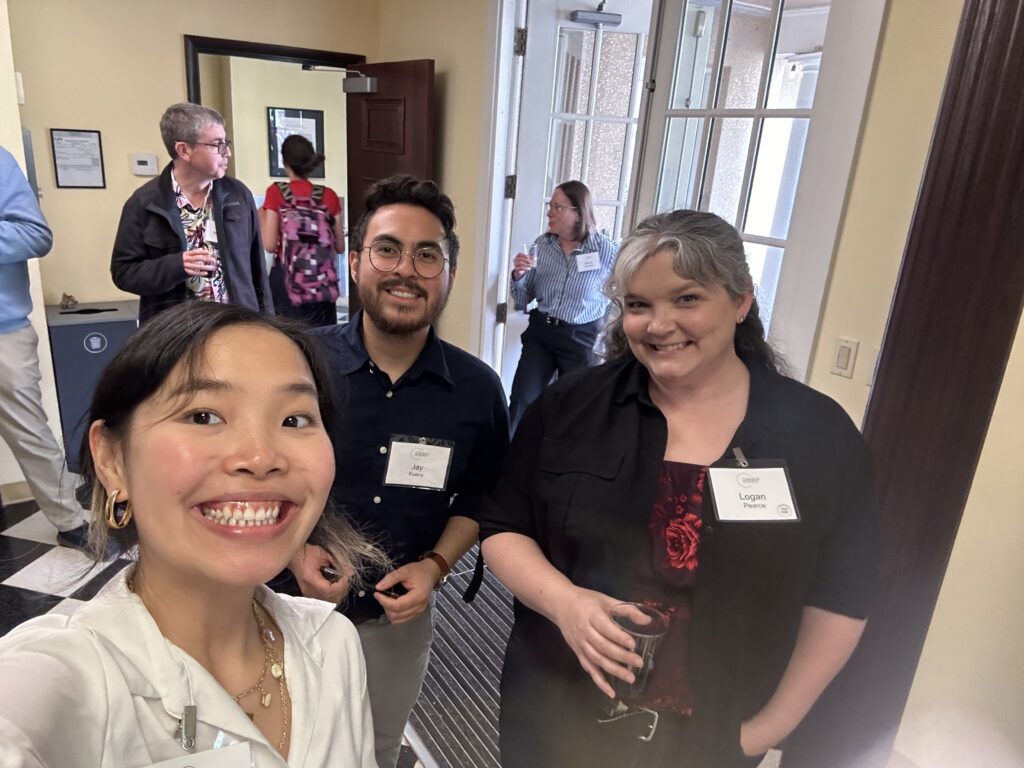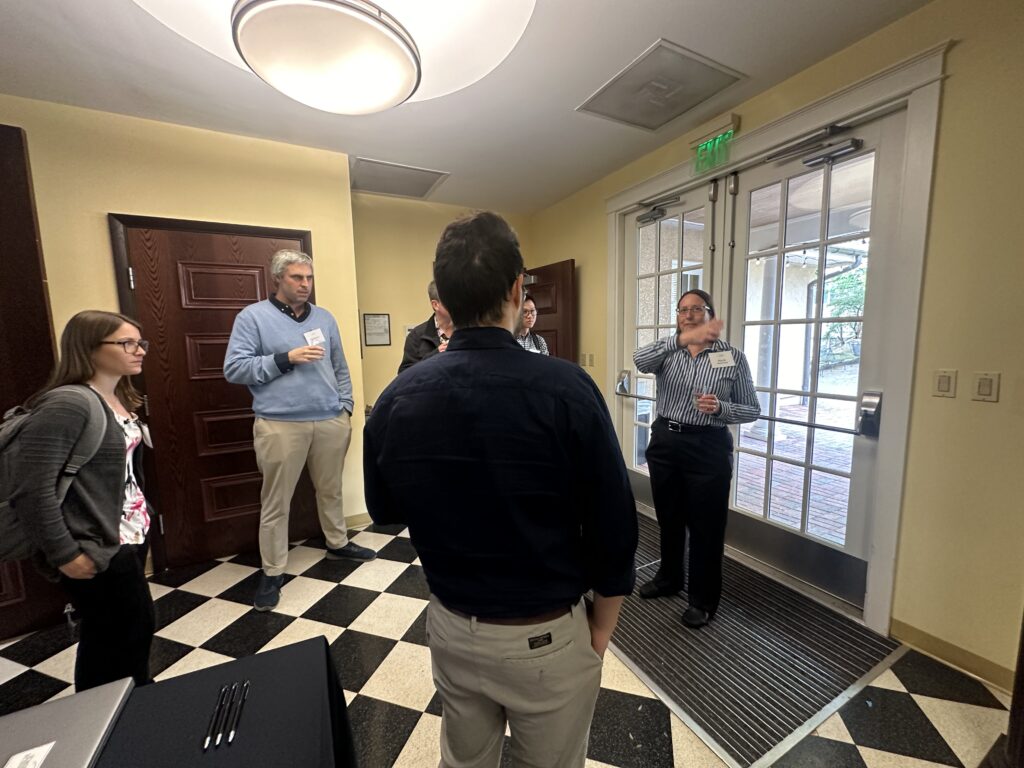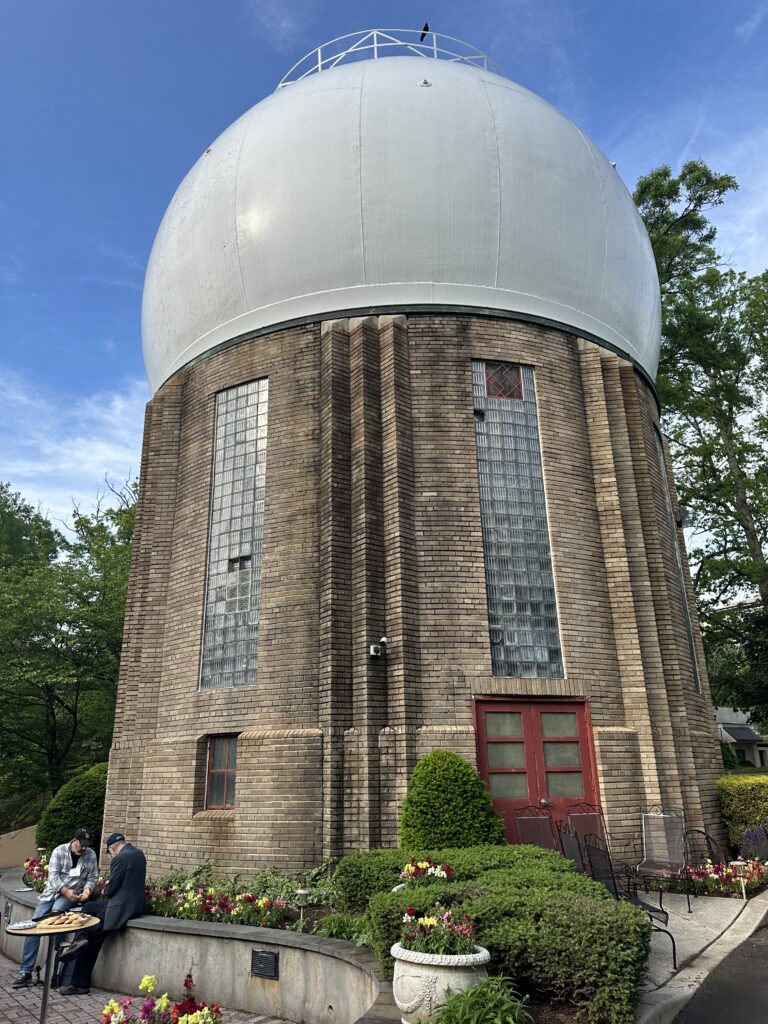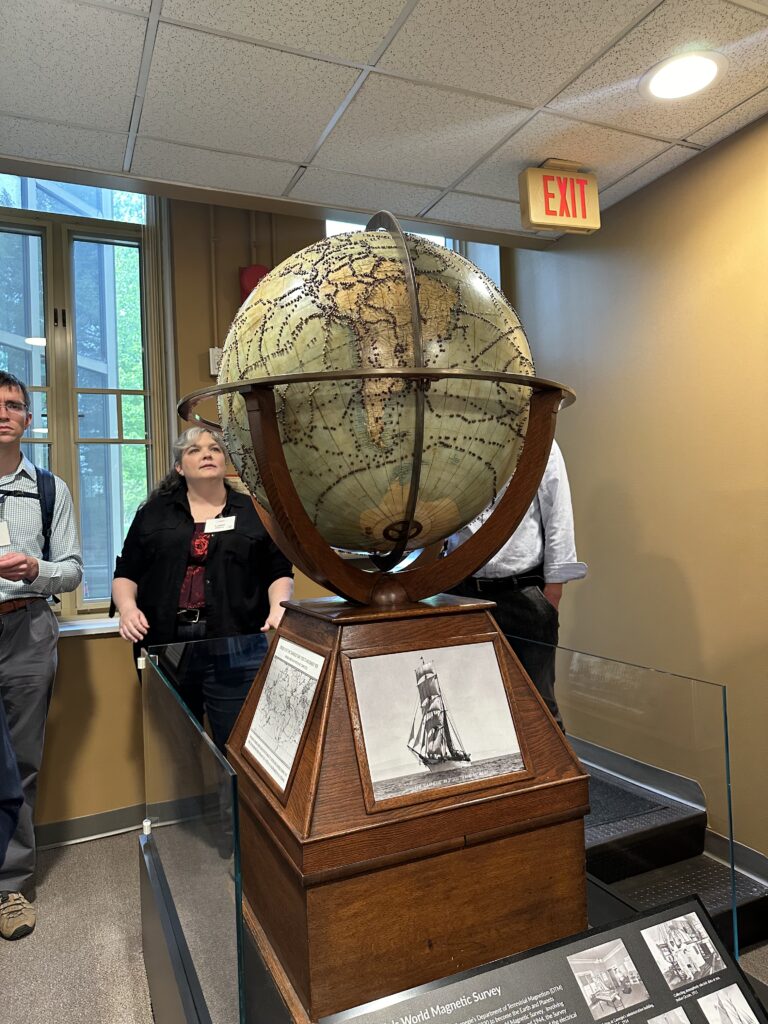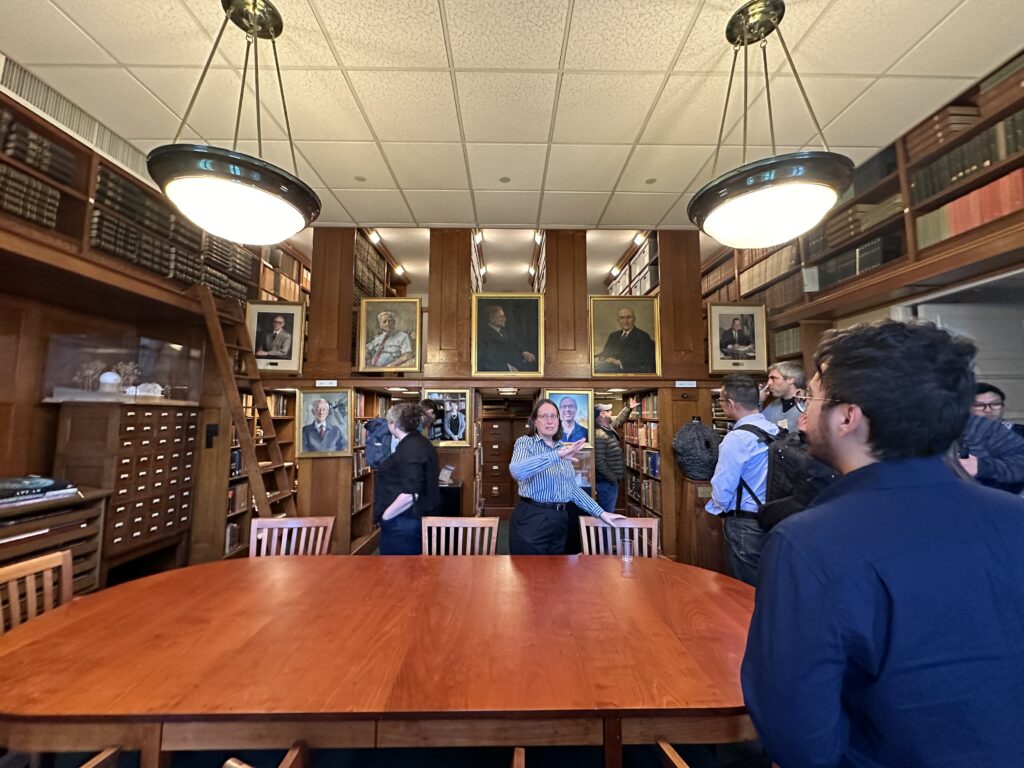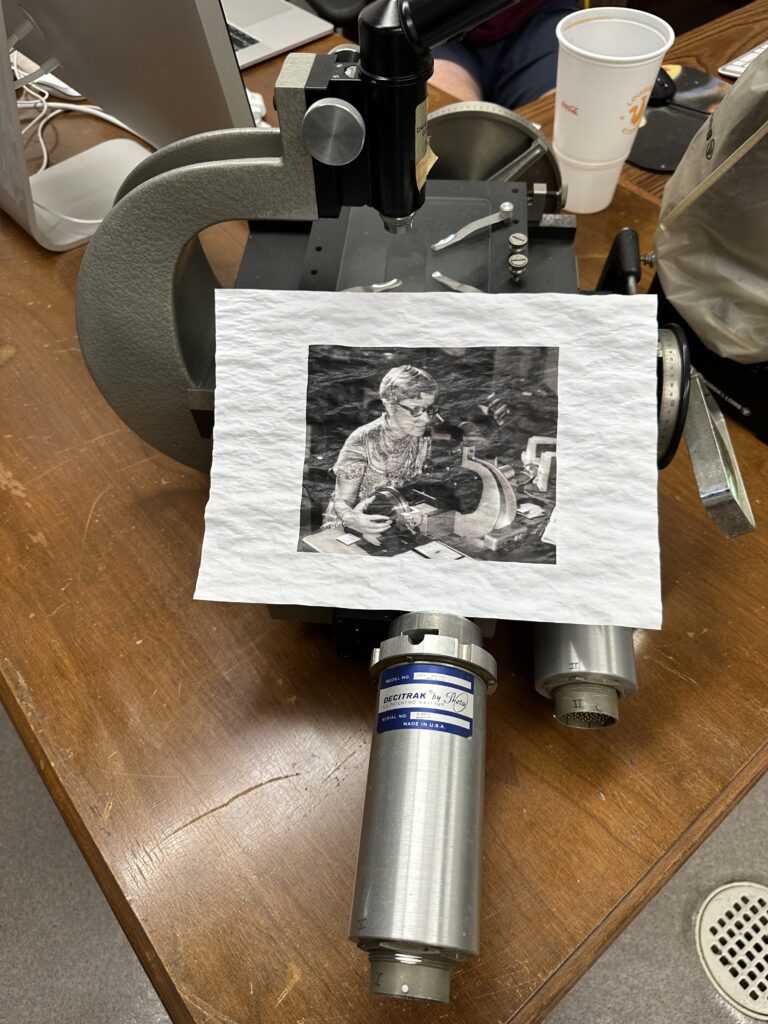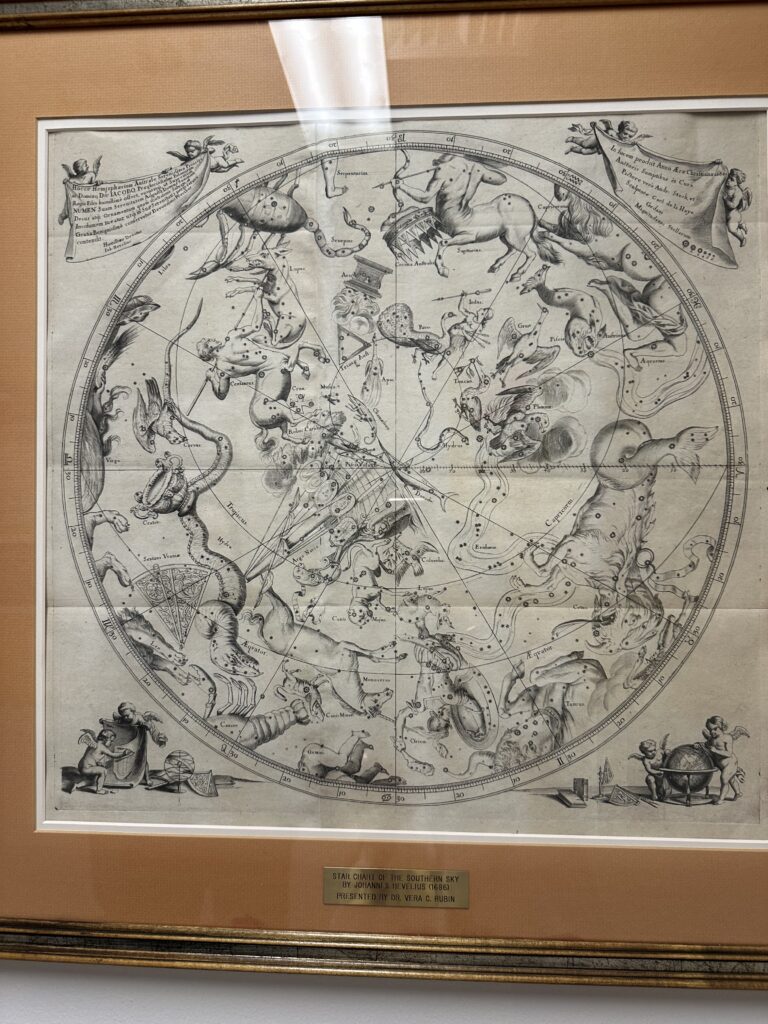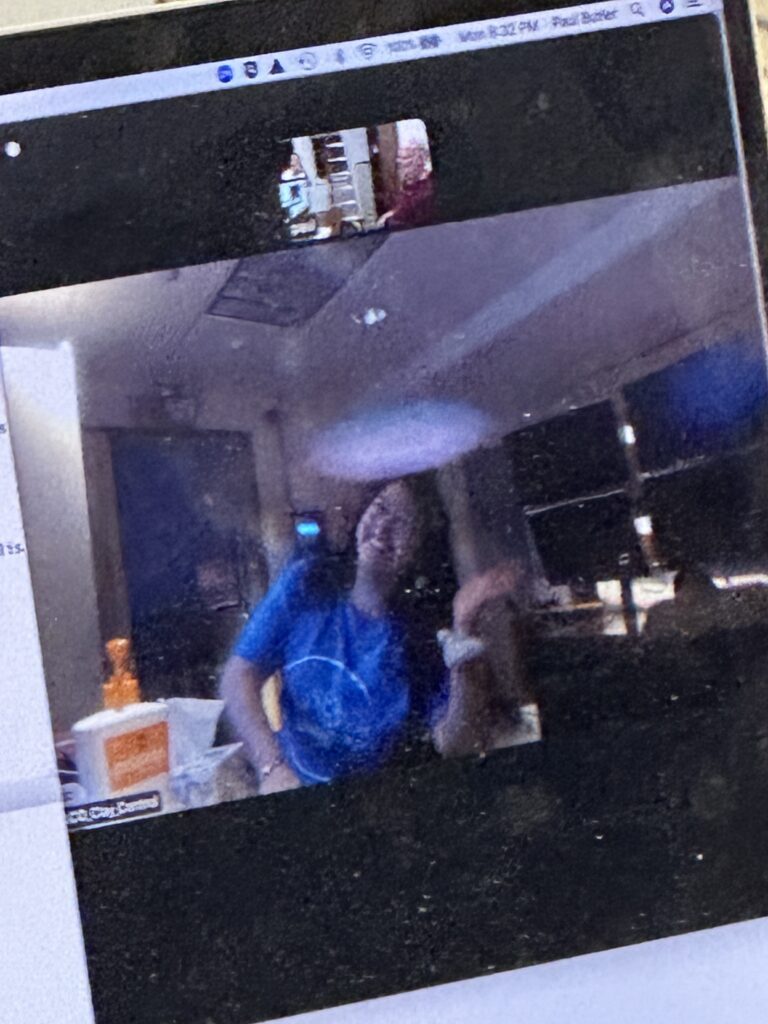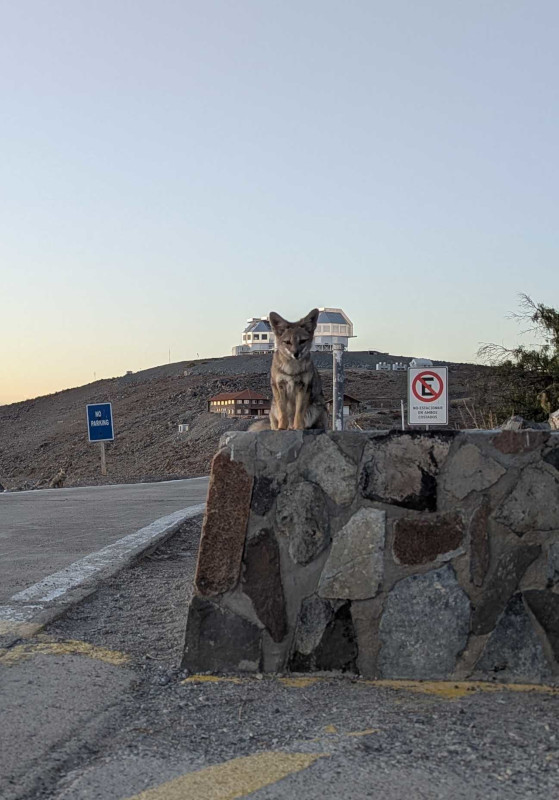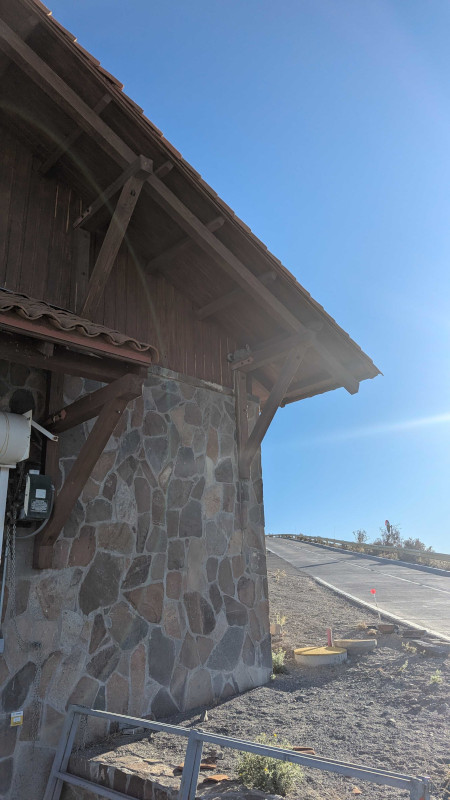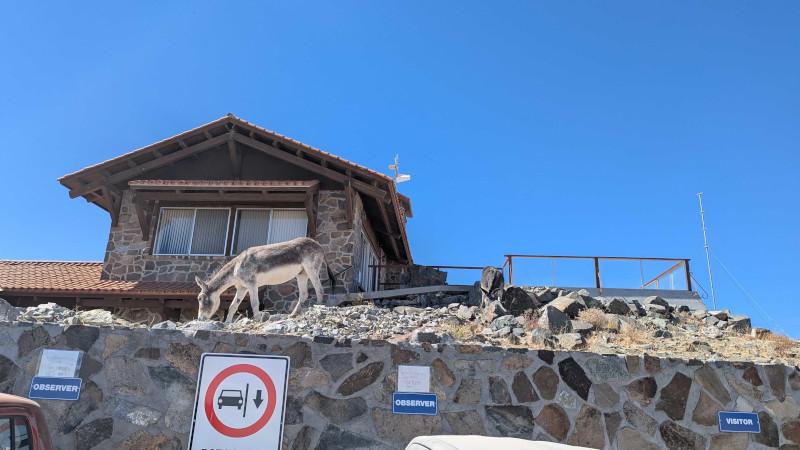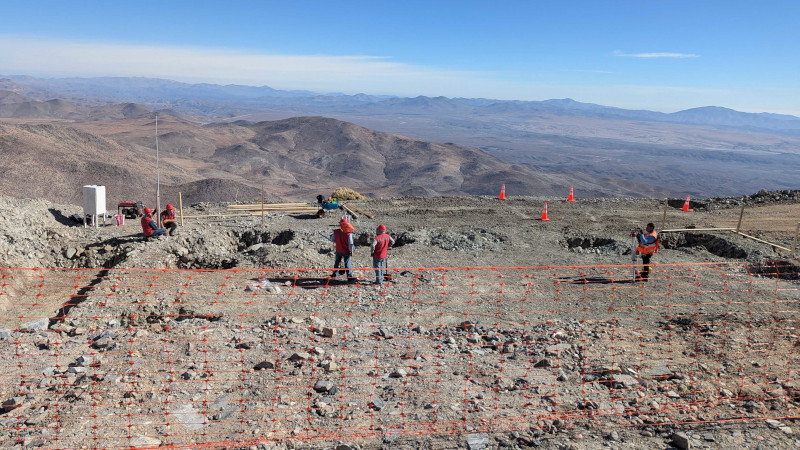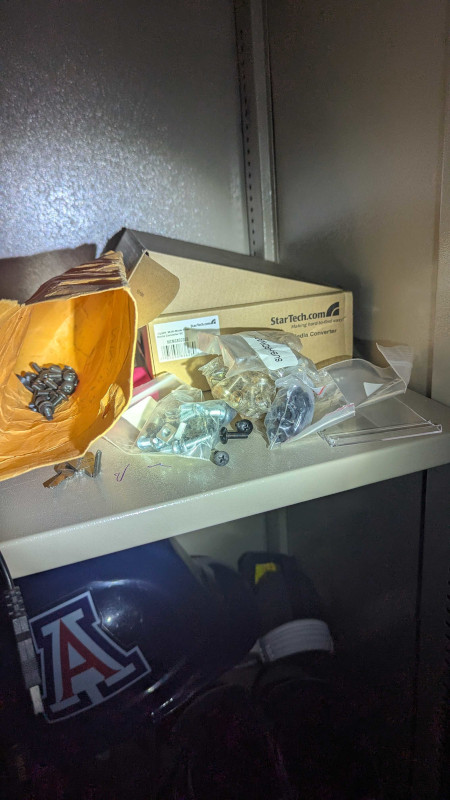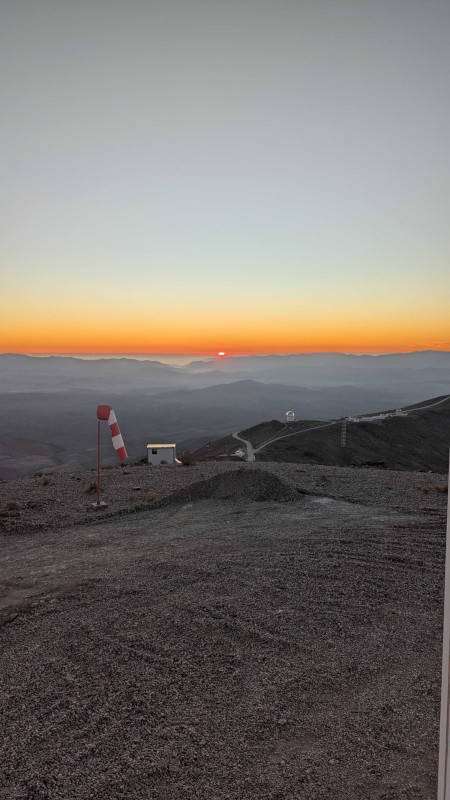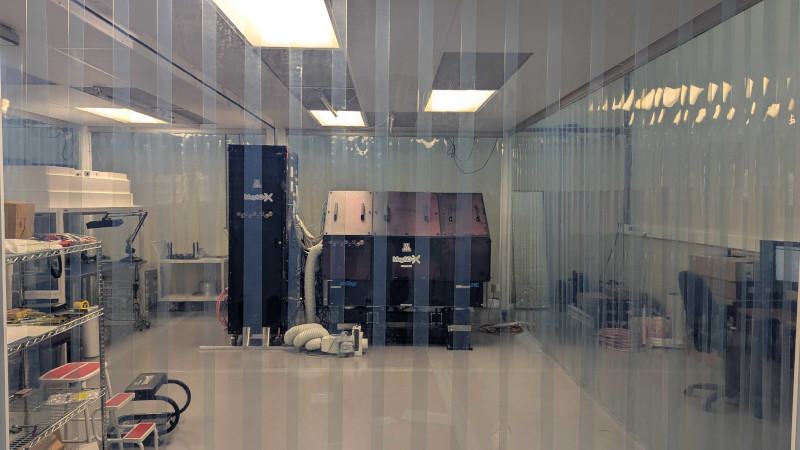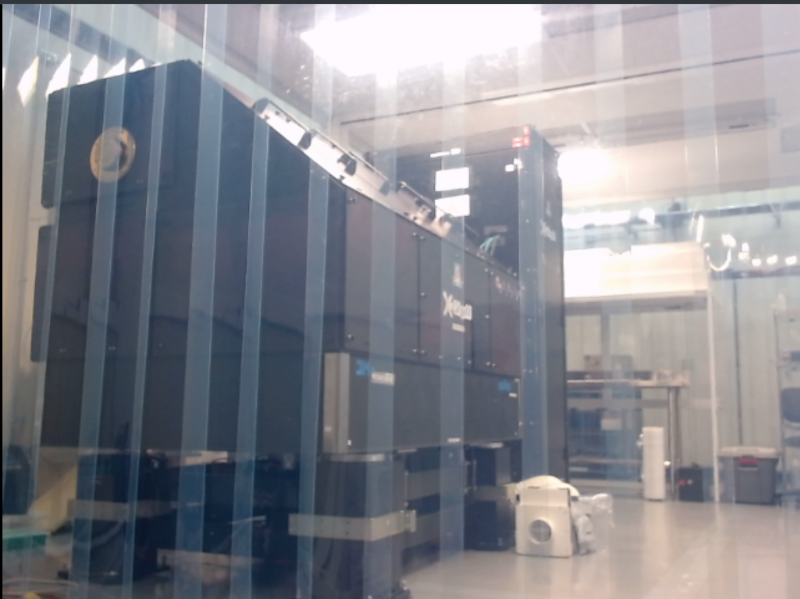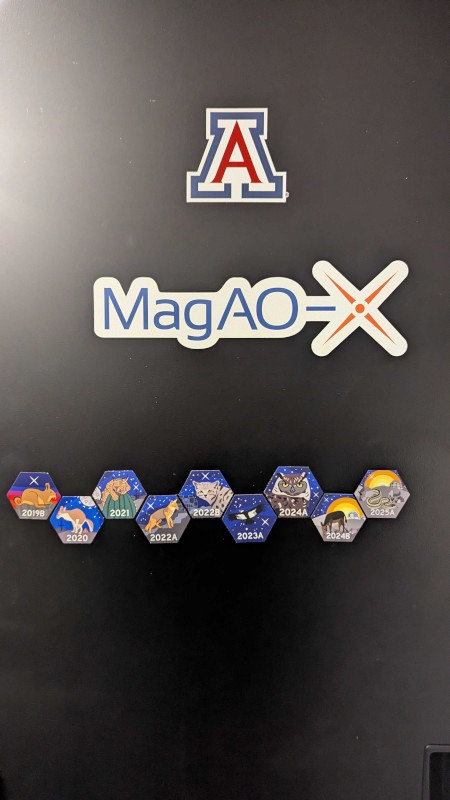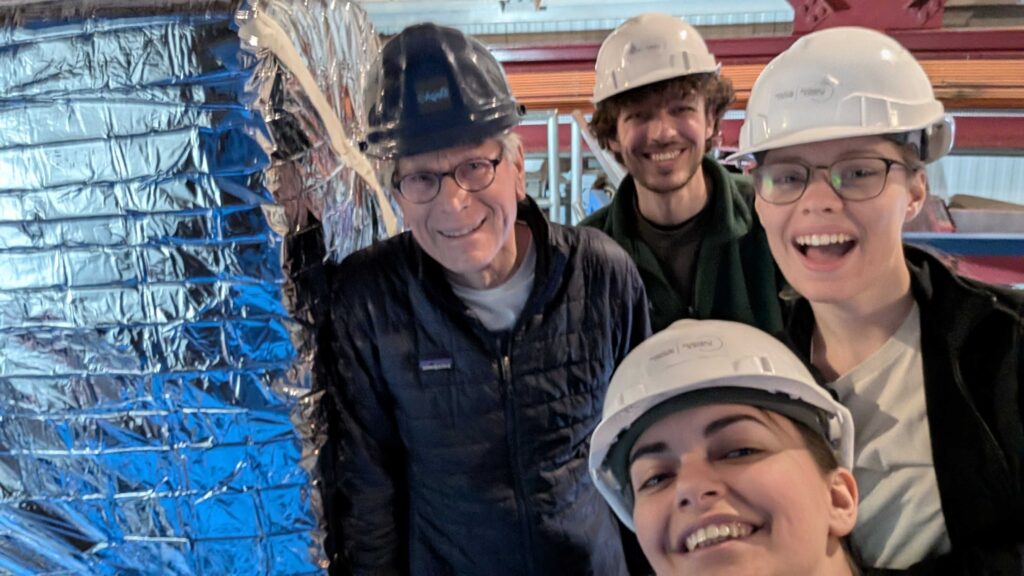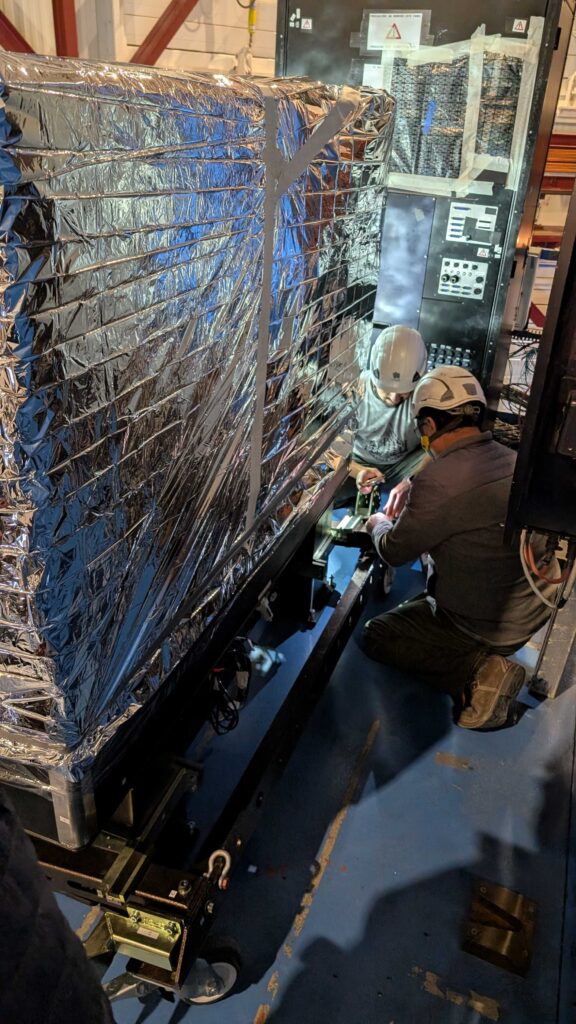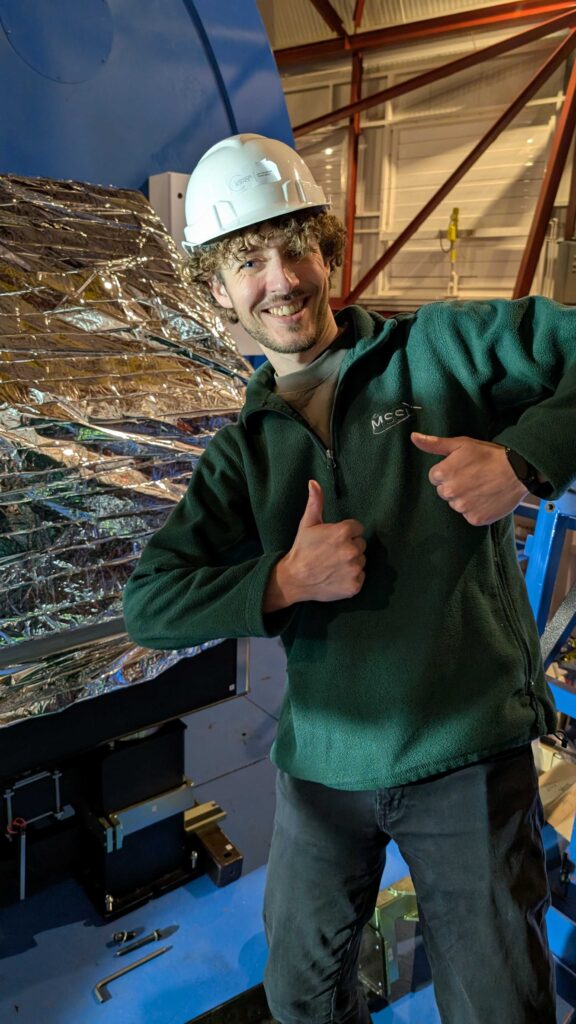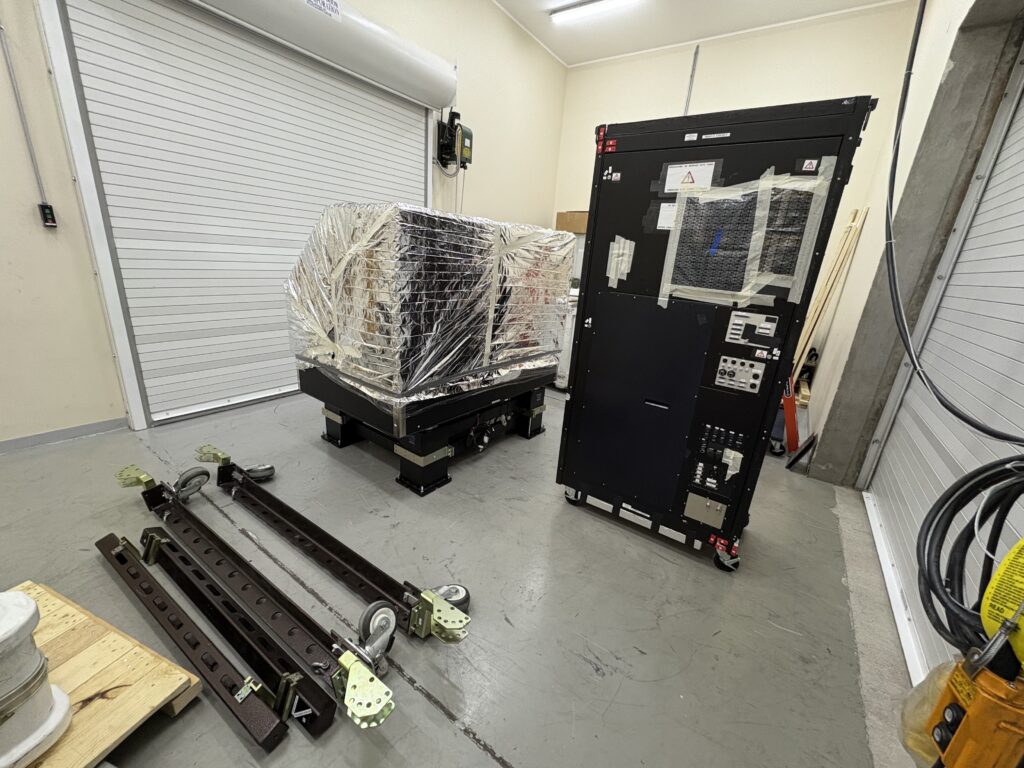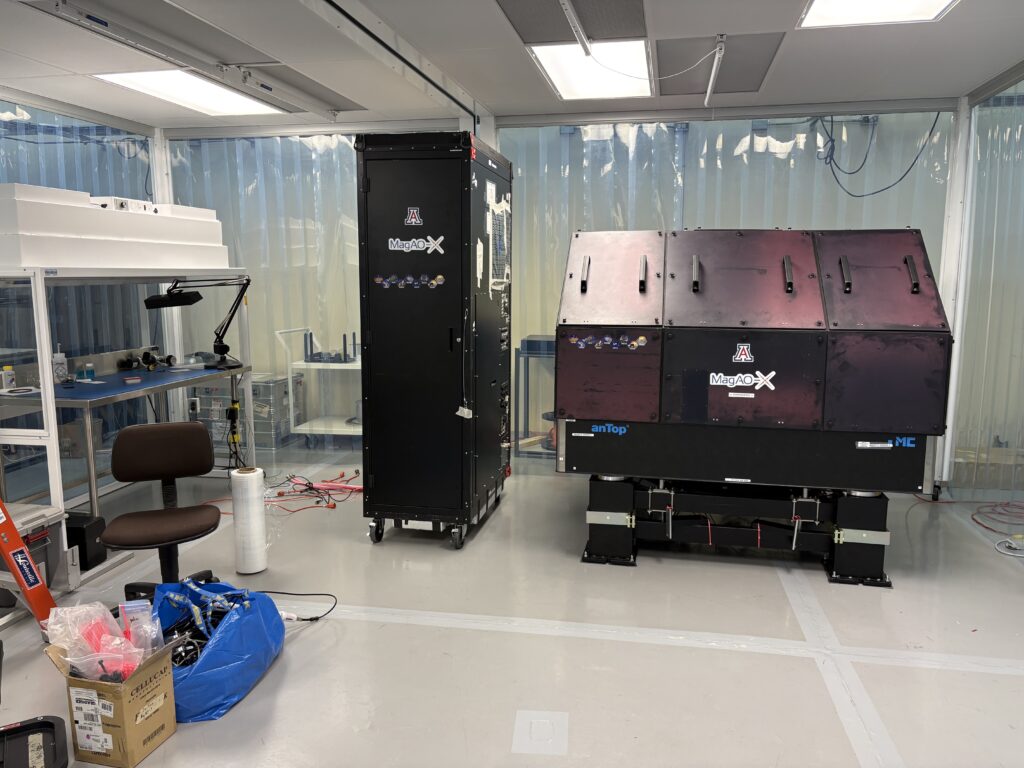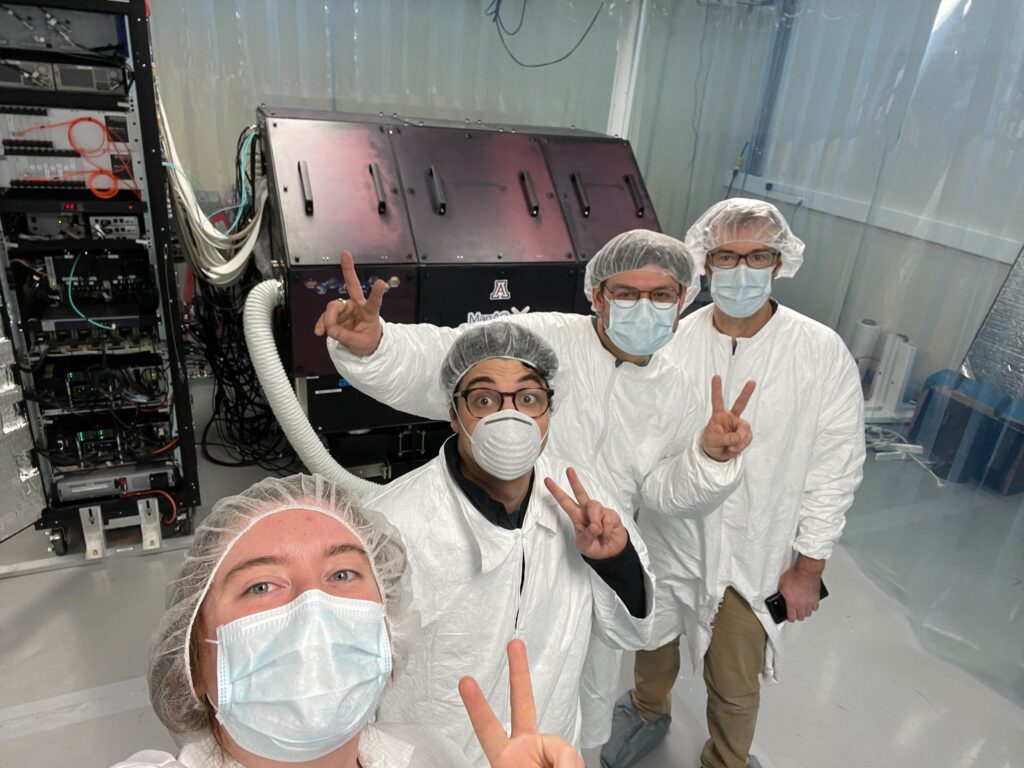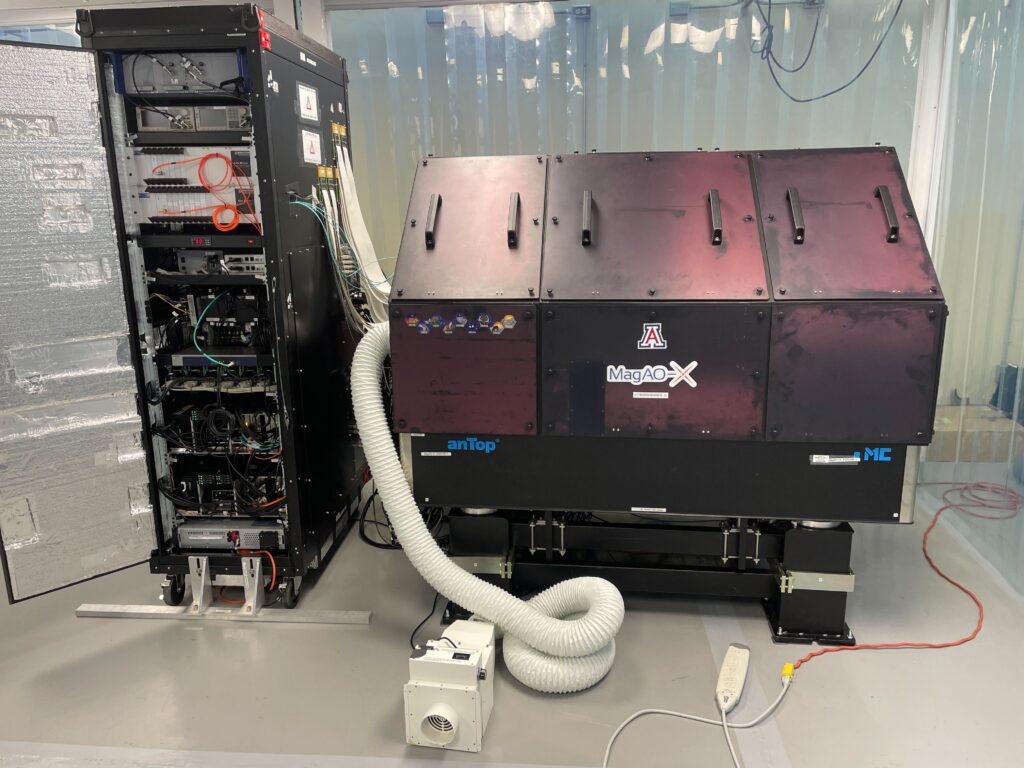Hi I’m here to blog the third and final day of the Magellan Science Meeting. It was a short day, the meeting officially ended after lunch. We spent the morning with talks focused on the future of the observatory and current and upcoming instruments. Including G-CLEF, a high resolution spectrometer designed to be coupled to GMagAO-X on the GMT, to feed diffraction-limited 25.4m primary sized PSFs into fibers for getting high high high contrast spectra of planet atmospheres in reflected light, specifically targeting the O2 absorption line on something like Proxima Centauri b. IF Prox b has an atmosphere and IF G-CLEF + GMagAO-X can achieve contrasts of 10 billion and IF there is life on Prox b then we MIGHT see a deep O2 absorption line. A high risk observation but the highest of rewards! Oh, and IF GMT gets built. Melting-face-emoji. Until then G-CLEF is planning to travel to Magellan to be coupled to our favorite child MagAO-X.
We said goodbye to Jay in the middle of the morning as he is flying off home.
The meeting concluded with discussion groups focused open questions for the future of Magellan. Some of the major topics under discussion: 1. How do we handle the numerous incredible and in-demand instruments that all want to live on the Nasmyth West platform for long times, including yours-truly, 2. How do we handle interruptions for targets-of-opportunity, such as supernovae that need to be observed immediately once they go off, and how do we compensate observers who lost time due to the interruptions, 3. Is there a better way to handle scheduling than giving someone one full night when they may only need 2 hours at the same time over multiple nights. This last one hasn’t affected us so much since we run our own mini-queue during MagAO-X’s blocks, so we can accommodate those types of things, but it is definitely a problem with other instruments and observers.
Then it was lunch and then it was time to go. Jialin and I are both boarding trains to New York, although not the same train… Shrug. Jialin is meeting her mom and they are bopping around NYC, I’m meeting blog-favorite Dr. Joseph Daniel Long for a visit to Flatiron Institute, and a little bopping around as well, as a treat. Jialin got a happy meal at the train station.
One thing I really enjoyed about this conference is even though it was a diverse set of science topics, everyone was doing observing. The speakers did a really good job talking to the diverse audience and making every talk accessible and interesting to folks from different fields. It was nice to see how everyone was using all the numerous instruments and expansive science impact of the observatory we all know and love. Special thanks to Dr Johanna Teske for all the hard work she did to put this together while also supporting the ongoing PFS run!
Catch you later peeps
The song of the day is Drops of Jupiter by Train
